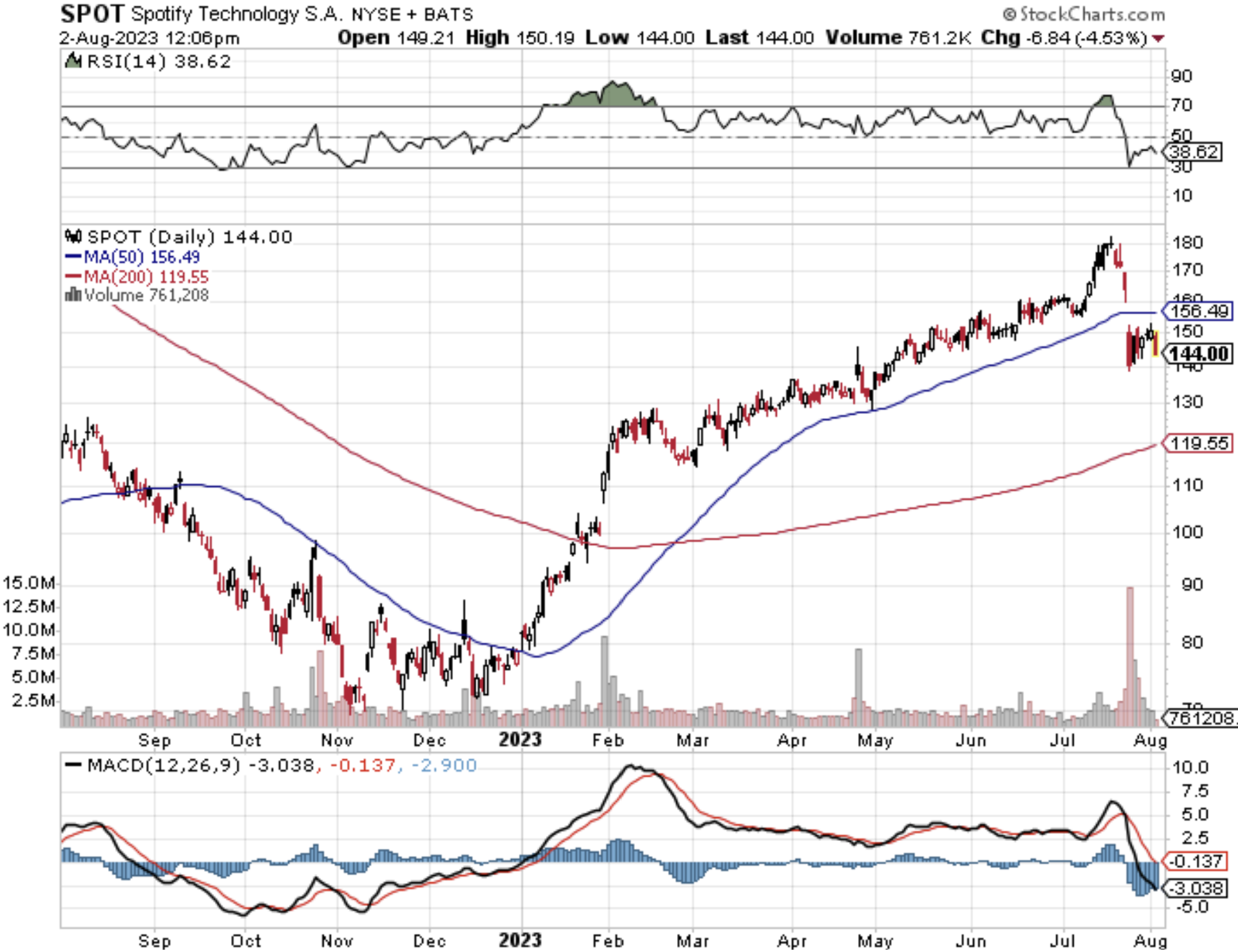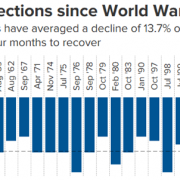Many industries have experienced consolidation in the last few years and music streaming has been no exception.
The strong emergence of a few companies running the show has resulted in these same companies wielding extraordinary pricing power.
Spotify (SPOT) has been one of the leading music streaming platforms for years, and when companies harness pricing power, they can raise prices to compensate for higher expenses.
That is exactly what Spotify did recently as their stock sold off on a wider-than-expected loss for the second quarter, even though subscribers surged.
The streaming service posted a net loss of 302 million euros.
Monthly active users (MUAs) beat estimates of 530 million to hit 551 million — a 27% improvement compared to the year-ago period. Net additions of 36 million represented Spotify's largest quarterly net addition performance in its history.
Premium subscribers also surpassed expectations of 217 million, jumping another 17% year over year to hit 220 million.
In its first-quarter report, the company said it expected to add 15 million new monthly active users in Q2, bringing its total to 530 million. It also expected revenue of 3.2 billion euros and to report 217 million paid subscribers in the quarter.
Spotify is continuing to invest in advertising, and its ad-supported revenue grew 12% year over year. The company said podcast advertising revenue growth reaccelerated to more than 30% year over year.
Spotify will increase the price of its Premium subscription offerings by as much as $2, which translates to a 20% rise for some plans.
In the U.S., Spotify’s Premium Individual offering now costs $10.99, up from $9.99, and the price of its Premium Duo plan changed to $14.99, up from $12.99. The company’s Premium Family plan is now priced at $16.99, up from $15.99, and the Student offering costs $5.99, up from $4.99.
Spotify doesn’t expect a drawdown in product demand from the price increase, and let’s face it, most people can handle paying an extra 2 bucks for something they use every day.
Music streaming is definitely close to becoming an industry participated in by just a few for as long as it’s a viable business.
That means Spotify will also have the opportunity to raise subscription prices again in the future.
The licensing issues alone are too much of a hurdle for most companies to get to launch so to really compete takes a high amount of upfront funds and in the world of high interest rates, tech firms can’t fund this type of retread business again.
Spotify isn’t a pure monopoly.
The others involved are Apple Music, Amazon, Tidal, Deezer, and Pandora.
SPOT’s stock has increased by over 85% after the earnings pullback, and at one point they were up over 100%.
Growing subscriptions at 27% is still considered something that a growth company does at a time when growth companies are hard to find.
It doesn’t matter that they aren’t profitable yet, as long as they add more subscribers, which they have strongly indicated they will.
The stock has pulled back from $175 and once the negative shakeout fades away, traders should get into SPOT while they still can.




